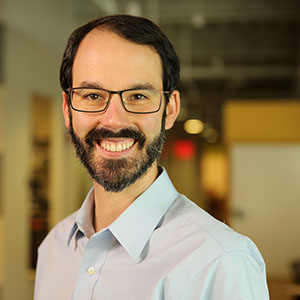This season of giving often brings a focus on corporate philanthropy — on giving. But it's hard to do well. If you wanted to design a corporate philanthropy program to have minimum impact, what would you do? Give out lots of grants in amounts too small to make a real difference. Back pet charities, not those with a strong track record. Talk about "results" without measuring them. Sadly, this low-impact approach to corporate philanthropy is too common. No wonder that a 2008 McKinsey survey found that only 20 percent of senior executives believe that their corporate philanthropy is effective in achieving social goals.
Given that companies are putting more than $14 billion a year into charitable causes, measuring results and ensuring real social impact should be important goals.
A few corporate leaders are realizing these goals, including Goldman Sachs, Nike and Intel. To do this they apply the same discipline to their charitable work that they do to their core business — insisting on strategic focus, investing at scale and measuring results. Here are three examples to inspire you to improve your philanthropic programs:
Strategic Focus: In 2004, after deciding on the importance of a high leverage approach to philanthropy, the Nike Foundation conducted a "business analysis," applying Nike's core competencies in consumer insights and market segmentation to come up with a market-based approach to giving. As Nike's Senior Portfolio Manager Adam Day says, "The global development sector had overlooked the enormous potential of investing in adolescent girls to reduce global poverty. We saw a gap in the philanthropic space that we could fill."
The Nike Foundation also leans on its expertise in innovation and scale to find solutions to poverty, while keeping its operations separate from the business. Day says, "we have been able to use the best of our Nike DNA, but have the freedom to operate as an independent force for change in the development sector. The focus on adolescent girls is truly authentic to our fundamental belief in the power of human potential, but also represents the highest value investment you can make to end poverty." Five years later, under the banner of "The Girl Effect," Nike Foundation and its many partners, such as the NoVo Foundation the World Bank, DFID and the UN Foundation, have successfully influenced the global agenda and helped launch multi-million dollar programs to empower adolescent girls around the world.
Investing at scale: In 2008, Goldman Sachs shifted its philanthropic giving from a traditional portfolio of education grants to multi-year initiatives focused on economic empowerment and job creation among under served small business owners. To do this, Goldman used its competencies in understanding markets, convening needed expertise and business networks. It committed $100 million over five years to one such initiative, 10,000 Women, which provides a mix of practical business education, support services and access to capital for under served women business owners in more than 20 countries. Goldman used its power to scale to get to market quickly, assembling a pipeline of services, investing in sophisticated measurement systems and developing a global core curriculum. Early results are encouraging. Nearly 70 percent percent of graduates have shown revenue growth and 50 percent have created jobs.
Be accountable for results: While many funders track service delivery, a 2010 report by the Committee on Encouraging Corporate Philanthropy notes that metrics measuring only output "offer little indication whether social improvement actually is occurring." Intel has created a way to measure its impact with its "Intel Teach" program, which has trained more than 8 million teachers in 60 countries and benefited from Intel's core competency in measurement for rapid prototyping. But Intel doesn't just measure the number of participants to gauge success. It measures and holds itself accountable for changes in the way that teachers use information and communications technology in the classroom. "Intel is rigorously numerical," says Wendy Hawkins, executive director of the Intel Foundation. "Measurement makes it more likely that our leaders will support and fund the philanthropy. This is what they demand in their core business."
Over nearly a decade of evolution, Intel has invested heavily in measurement, finding that 75.4 percent of participants applied their new plans for integrating technology into the classroom at least once after completing the program. "Most corporations undertake strategic philanthropy expecting a return, a benefit to reputation," says Hawkins. "If an evaluation comes back negative, it doesn't help reputation. We're willing to take a risk. What we've learned helps us improve the designs."


